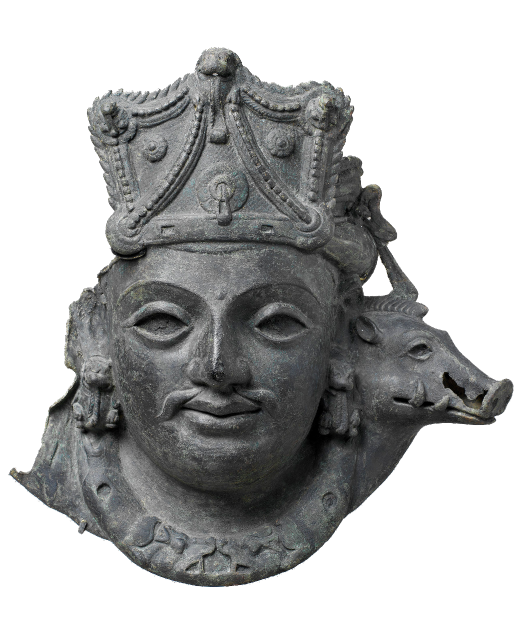PERSPECTIVES
How Sufi ‘Dhikr’ Shaped Kashmir’s Architecture
The architectural landscape of Kashmir is marked by a distinctive synthesis of Islamic, Central Asian, and indigenous Himalayan traditions. Among the most significant is the architectural influence of Sufism, introduced in the region between the 13th and 15th centuries. This period saw the establishment of numerous khānaqāhs — Sufi hospices and spiritual centres — built in the unique timber architectural style that continues to shape the visual and cultural identity of the Kashmir Valley. The Sufi legacy in Kashmiri architecture represents a distinctive confluence of devotional practice, local material culture, and transregional artistic exchange.
Sufi orders, particularly the Kubrawiya, played a key role in devotional practices, community welfare, and the arts as modes of spiritual refinement. While Sufism emphasises inner purification, non-attachment, and submission to the divine, it does not necessarily reject the material world. Instead, Sufis often seek to imbibe worldly actions — like craftsmanship, trade, or even governance — into acts of devotion. This idea is rooted in the Quranic concept that:
“God loves those who perfect their deeds (ihsan).”
— (Qur’an, 2:195 and elsewhere)
In this spirit, Shah-e-Hamdan (Mir Sayyid Ali Hamadani) viewed art and craftsmanship not as distractions to the spiritual journey, but as means to express and attain closeness to God. This approach aligns with a Kubrawiya worldview, which emphasised the illumination of the soul through not only prayer and asceticism but also through beauty (jamaal) and creative expression.
The khānaqāhs served as multifunctional spaces — places for prayer, teaching, artistic production, and social mediation. The most prominent of these, the Khānaqāh-i M’aulā, located in Srinagar’s old city, exemplifies this confluence of religion, art, and vernacular architecture.
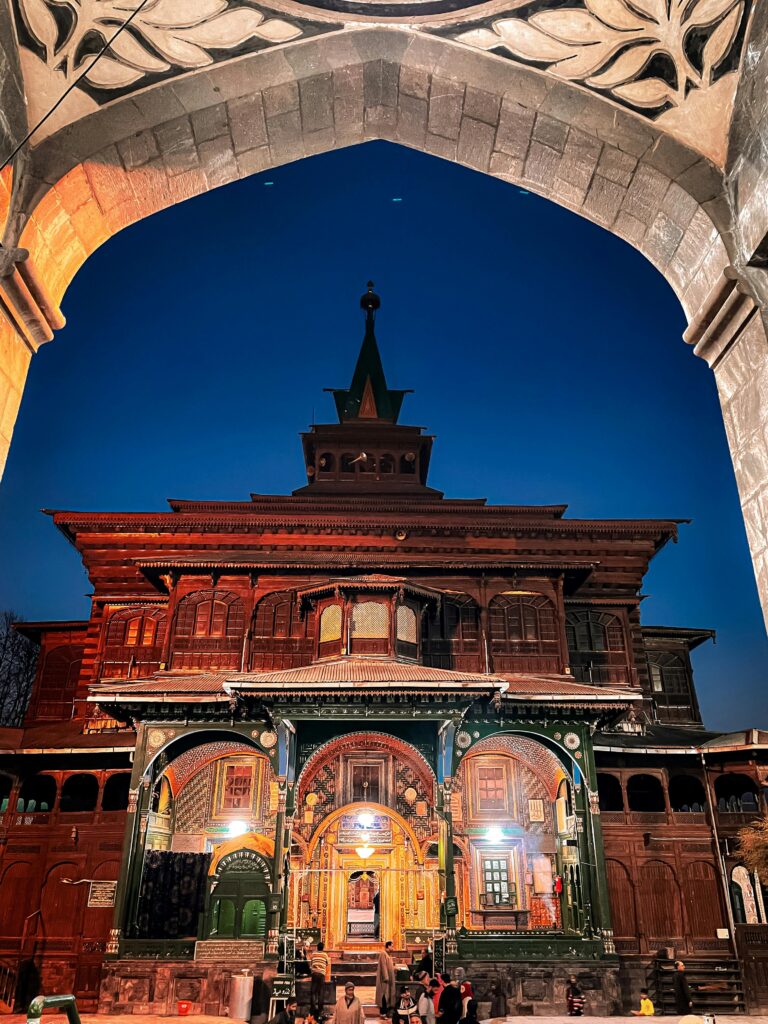
Khānaqāh-i M’aulā: Designed to Inspire
Khānaqāh-i M’aulā, also known as the Khānaqāh of Shah Hamadan, was originally established in 1395 by Sultan Sikandar in honour of Mir Sayyid Ali Hamadani (1314–1384), a Persian Sufi saint of the Kubrawiya order who played a central role in the spread of Islam in Kashmir.
According to the book, Cultural Resource Mapping of Srinagar City, the structure was destroyed twice in the fires that broke out in 1479, and then again in 1731. Each time, it was rebuilt in keeping with the original building’s character. The structure, situated on the right bank of the Jhelum River, has undergone several such reconstructions, most recently after another fire engulfed it in 2017. Despite periodic damage, its overall form and stylistic elements have been carefully preserved and restored using traditional materials and techniques.
“The Khānaqāh-i M’aulā served as the prototype for the construction of Muslim khānaqāhs in the eighteenth and nineteenth century, given its religious and architectural influence. The architecture and the detailing of its interiors found a resonance in the designing of a number of Muslim religious buildings, including the khānaqāh at Pampore, Naqshband Sāhab, and the Dastgīr Sāhab,” writes Hakim Sameer Hamdani in his book, The Syncretic Traditions Of Islamic Religious Architecture Of Kashmir.
Architecturally, the khānaqāh is notable for its use of timber framing and brick infill, a response to the seismic activity in the region as well as a continuation of pre-Islamic wooden building traditions. The structure consists of a square plan topped by a multi-tiered, pyramidal roof with a central spire (guldasta), reflecting Buddhist influences. The prominent use of deodar cedar, a locally available wood, provides durability and workability for intricate carving.
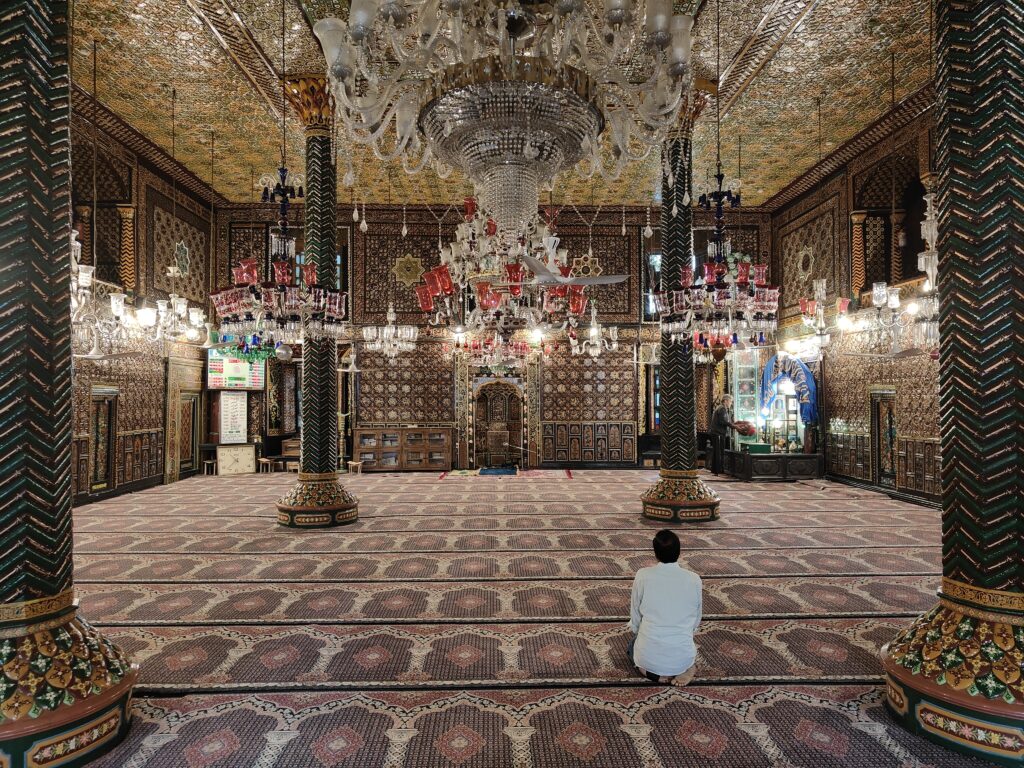
The facade features deeply carved eaves, multi-foil arches, and projecting balconies (jharokhas) supported on brackets. The building is adorned with moulded wooden panels, papier-mâché work, and colourful floral motifs, particularly in the interior prayer hall, which showcases techniques introduced and promoted by the artisans who accompanied Shah Hamadan from Central Asia. Elements such as muqarnas-inspired ceiling cornices, khātam bandi (geometric latticework ceilings), and extensive use of painted and gilded woodwork contribute to its rich aesthetic vocabulary.
Shah Hamadan is credited not only with theological influence but also with the introduction of several crafts and industries to the region. “Historical records and oral traditions suggest that he travelled with a large entourage that included weavers, metalworkers, woodcarvers, and calligraphers, many of whom settled in the valley and transmitted their skills to local artisans,” says 44-year-old Qadri Asif Ahmed — a Sufi practitioner. This had a lasting impact on Kashmir’s material culture, evident in the development of papier-mâché, pashmina weaving, carpet making, and wood carving, many of which remain central to the region’s craft economy.
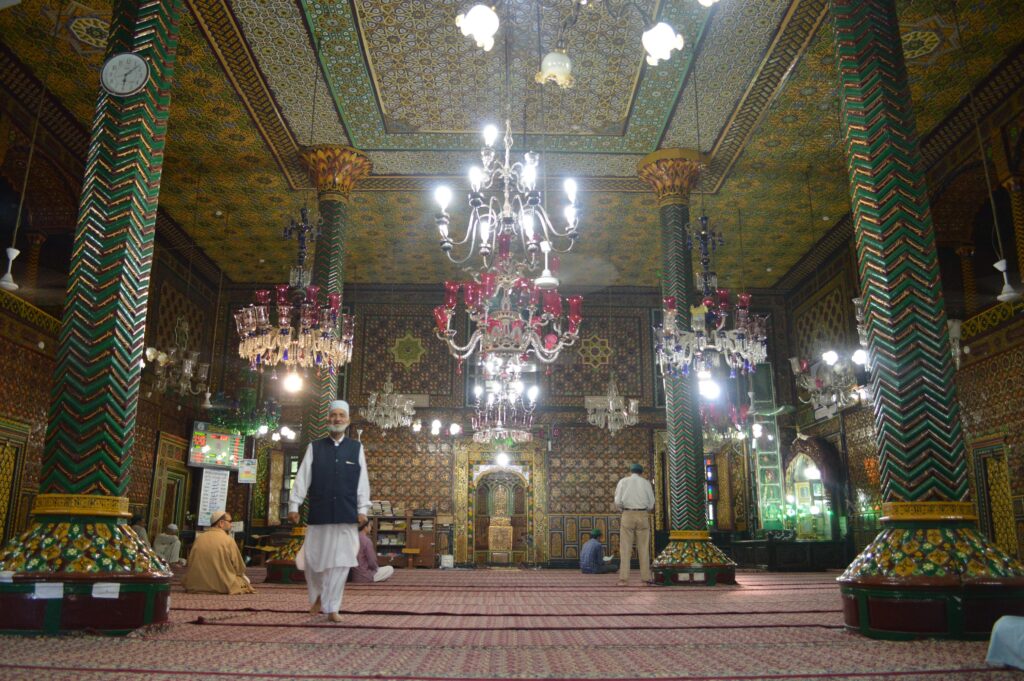
The khānaqāh, therefore, functioned as more than a religious institution — it was a node of artistic and vocational training, cultural dissemination, and community organisation. “Sufi shrines often operated as informal guild spaces, where artisans apprenticed under spiritual mentors and master craftsmen,” Ahmed adds.
The architectural vocabulary established by Khānaqāh-i M’aulā was adapted in several later structures across the valley, particularly during the reign of the Chak and Mughal rulers. The Khānaqāh of Baba Daud Khaki in Anantnag and the Khānaqāh of Baba Naseeb-ud-Din Ghazi in Bijbehara are notable examples. These structures typically follow a similar typology: a multi-tiered wooden building with centralised prayer spaces, extensive use of painted ceilings, arbor motifs, and ornamented niches (mihrabs).
The Khānaqāh of Sheikh Hamza Makhdoom, located on the southern slopes of Hari Parbat in Srinagar, is another important Sufi structure. While slightly more monumental and influenced by later Mughal additions, its core design remains rooted in the earlier timber tradition. Many of these buildings are surrounded by courtyards, wuzu (ablution) areas, and attached graveyards, reflecting their function as both communal spaces and mausoleums.
In Tune with Nature
A notable feature of Sufi architecture in Kashmir is its integration with the natural environment. Shrines were frequently constructed on riverbanks, hillsides, or near springs, aligning with the Sufi emphasis on reflection, the symbolism of water, and solitude. The placement of Khānaqāh-i M’aulā along the Jhelum allowed it to be accessed by boat as well as foot, underscoring the interconnectedness of urban and natural systems in medieval Srinagar.
Wooden construction methods also enabled adaptability to the climatic conditions of the valley, including heavy snowfall and damp winters. The use of steeply sloping roofs, deep eaves, and internal ventilation systems demonstrates a sophisticated design responsiveness to the environment within the Sufi architectural framework.
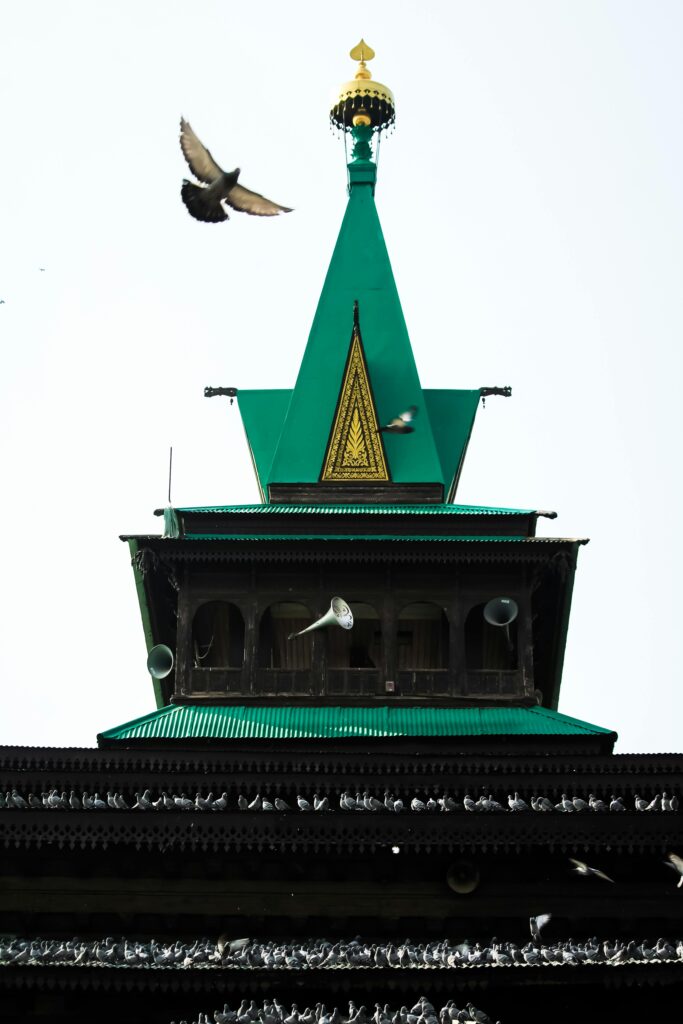
Another significant development in Kashmiri Sufism was the emergence of the Rishi order. The most prominent figure of this order, Sheikh Noor-ud-din Noorani (c. 1377–1440), also known as Nund Rishi, is venerated at the Chrar-e-Sharief shrine in Budgam district.
Though architecturally simpler than the khānaqāhs of the Kubrawiya tradition, the shrine reflects similar construction techniques: a wooden, pyramidal-roofed structure surrounded by an open courtyard. The original building was destroyed by a fire during the 1995 conflict, but has since been reconstructed in accordance with traditional methods. The site continues to draw large numbers of pilgrims and is a focal point of the valley’s spiritual geography. The khānaqāhs and shrines constructed from the 14th century onward offer valuable insights into the social, spiritual, and aesthetic history of the region. For many Sufi masters, creating art — be it in architecture, calligraphy, textile weaving, or carving — was a form of dhikr (zikr), which means the remembrance of God. Through repetition, precision, and intention, the artisan’s labour becomes a form of meditation.
Structures such as the Khānaqāh-i M’aulā are not only important religious monuments but also repositories of intangible heritage — including storytelling, craft knowledge, and community identity. Their continued relevance and preservation are vital to understanding the broader cultural landscape of South Asia, particularly in contexts where spiritual pluralism and vernacular architecture intersect.
Adil Amin Akhoon is a Kashmiri journalist whose work appears in leading international publications, such as Al Jazeera, Christian Science Monitor, and New Lines Magazine. He covers culture, identity, resilience and underreported narratives.
